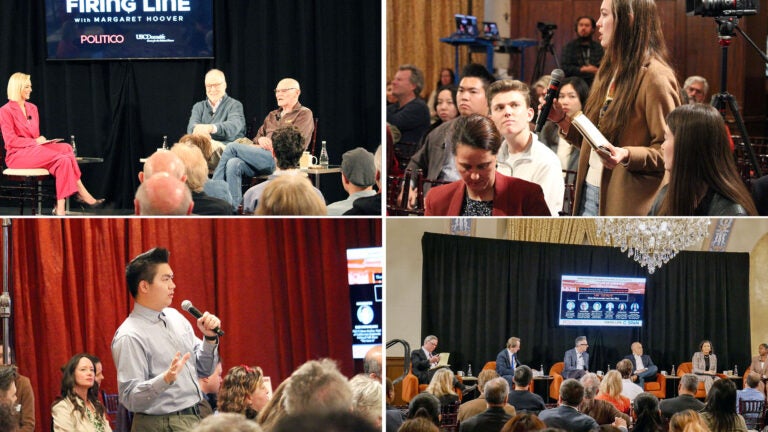
Why Trump took back the White House
Donald Trump won a decisive victory in November, securing both the electoral and the popular vote. Although many of his policies have broad voter support, Trump himself remains a polarizing figure. Meanwhile, the Democratic Party has lost appeal for significant portions of the country, including once stalwart supporters like the working-class and minority voters.
Experts from all sides of the political aisle convened at this year’s annual Warschaw Conference on Practical Politics hosted by the Center for the Political Future (CPF) at USC Dornsife College of Letters, Arts and Sciences to discuss why Trump’s campaign succeeded with voters, why Kamala Harris’ didn’t, and what the future might hold for the two parties.
At the conference, political commentator and host of PBS’s Firing Line Margaret Hoover conducted a taping of the program with Democratic strategist James Carville, who helped Bill Clinton take the White House in 1992, and veteran Republican strategist Mike Murphy, co-director of CPF.
The three held a wide-ranging discussion that touched on the Republicans’ successful populist makeover, what Harris’s campaign might have done differently, and whether the “Make America Great Again” camp could see schisms soon.
Part of the problem for the Democrats, says Carville, was that the party picked poor candidates, both in first attempting to reelect President Joe Biden and then replacing him with Vice President Kamala Harris. “If we were playing the Super Bowl, we started our seventh string quarterback,” says Carville.
The Democrats also failed to offer much in the way of persuasive, populist policies that addressed voters’ economic concerns, such as raising the federal minimum wage, Carville notes. “People say, ‘Do you think they should move to the left? Do you think they should move to the right?’ Move to, like, giving people a raise!”
Trump’s critiques of the Biden administration resonated with voters during his campaign, but the real test will be whether he can deliver on his promises to actually improve things, says Murphy. “He was elected to fix the economy, so let’s see how a trade war [goes]. I think he’s on a shot clock, and I think he’s going to hit the rocks over time.”
The two also debated whether voters view Democrats as effective administrators and thus suited to manage the country.
Democratic-run California has a “competence crisis,” exemplified by poor management decisions that exacerbated recent wildfires in Los Angeles, Murphy says. “Voters here of every party are hopping mad.” If Democrats want to take back the presidency, they’d be advised to first demonstrate proper management of their own cities and states, he notes.
Carville reminded the audience, however, that Democratic mayors oversee cities that produce some 70% of the GDP and that they also have a track record of substantive policy change. “Look at what Obama did. Where do you think 23 million people got their health care from? Not from a talking point, but from actually winning an election and executing a policy.”
More from the Warschaw Conference
Other panels during the day dialed more directly into what drove Trump’s win, how the Democrats “lost the plot” and what to expect from the Trump administration over the next four years.
Watch “Trump’s Historic Comeback” >>
Watch “How Democrats Lost the Plot” >>
Watch “‘The Future Lies Ahead’: The Second Trump Presidency” >>
Watch “Fight On for the Political Future with USC Students” >>